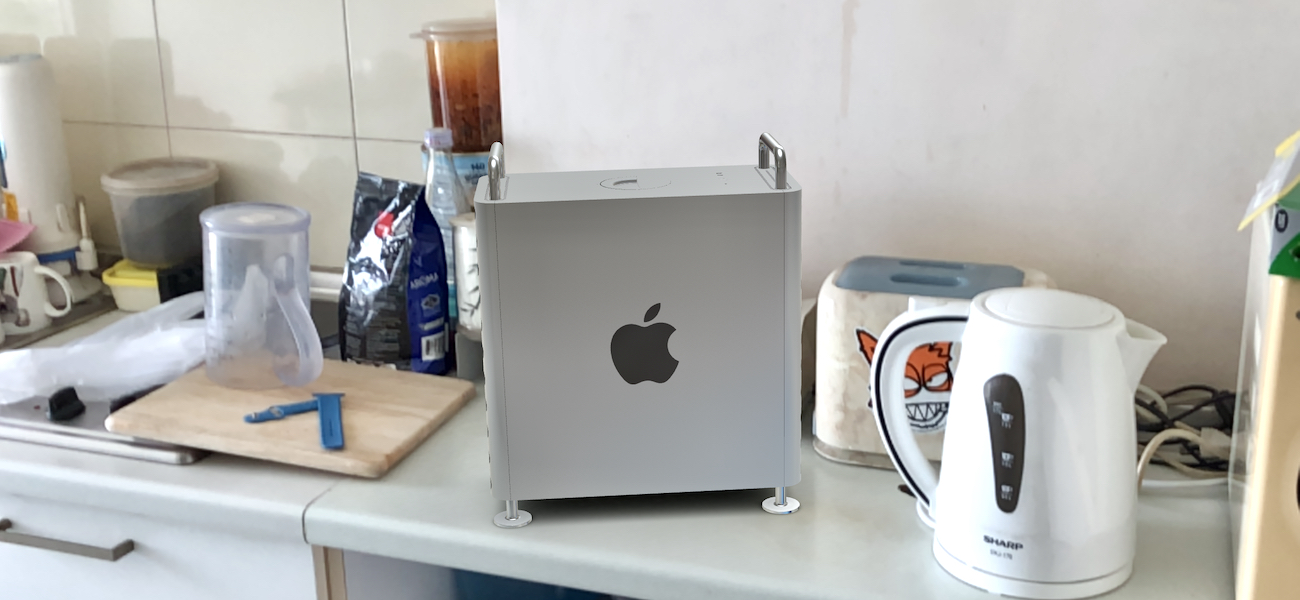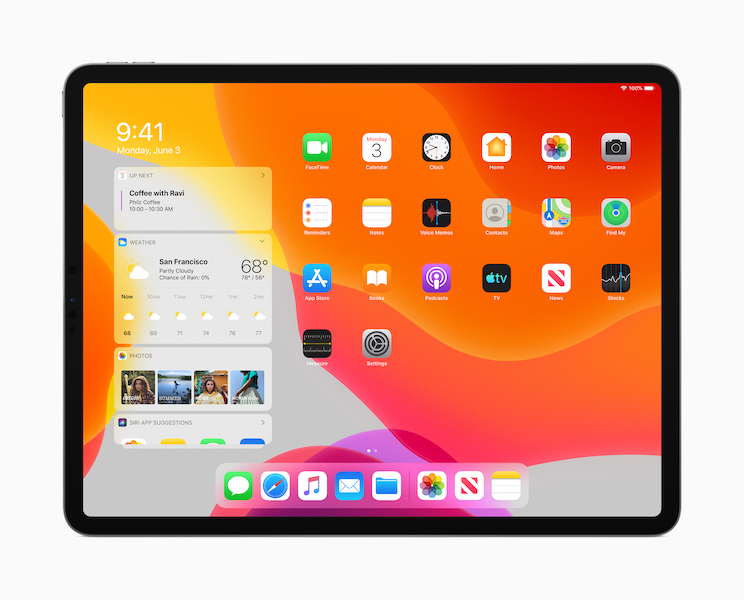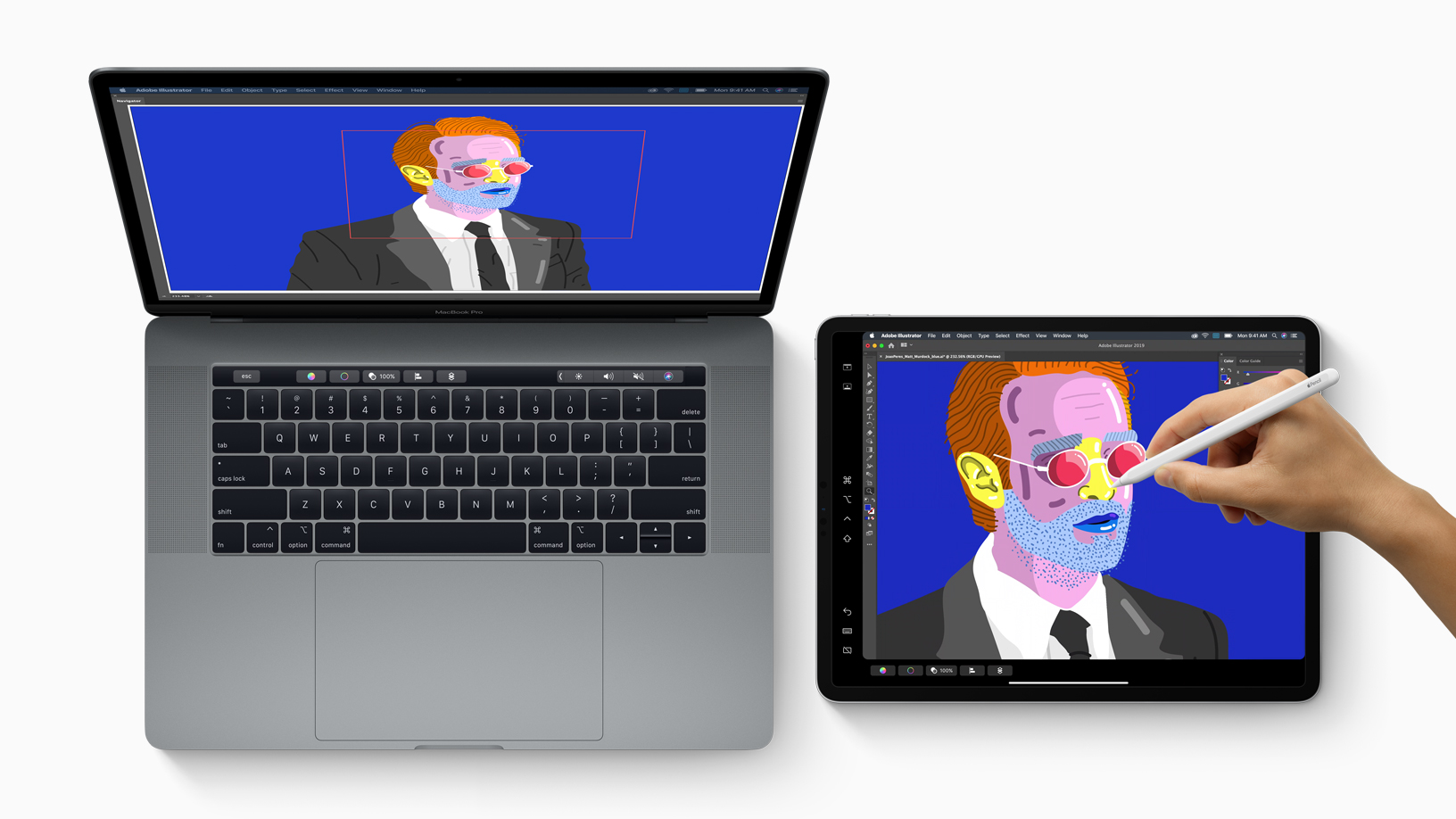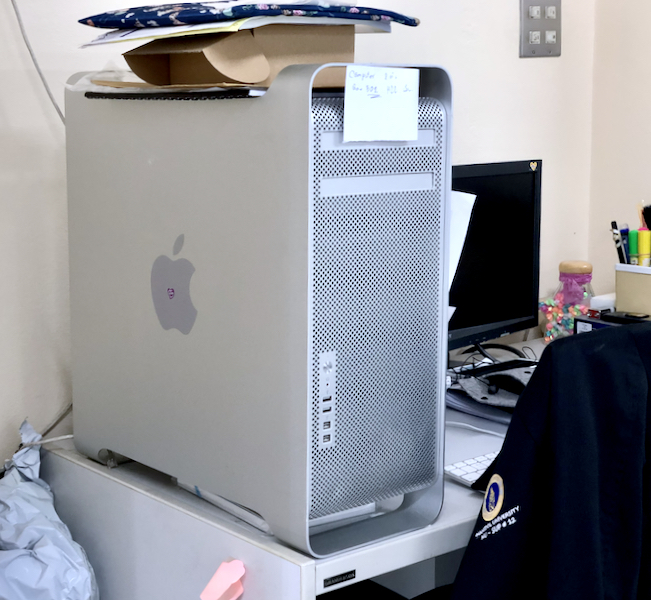|
|
Cassandra - Midweek Review: WWDC Notes and Comments - A New RealityBy Graham K. Rogers
Background and Initial FeedbackAs I scanned through some of the early morning news on Tuesday, I saw right away that two of my longtime iOS wishes had been granted: editing in Photos now has White Balance and Sharpen. More were to come. There are four other new editing features that I had previously only found in higher level iOS image-editing apps (and in Photos on the Mac): Vignette, Vibrance, Noise Reduction, and Definition.Along with the MacPro announcement, I was fairly happy at the outset. A later message also pointed out to me that it will be possible to attach a disk to an iPad and read data: long overdue; but great to see. Mouse and trackpad support will be coming too (Luke Filipowicz, iMore). The first pictures I found of the MacPro and the matching Pro display come from Wu, of local site, Spin9: the text is Thai, but the pictures are fine. In the opening paragraph I saw a number of English words (technical reasons), including iPadOS: another wish granted. I had heard rumors of a fork from iOS, but this was also confirmed in some information I saw from Apple about the WWDC keynote. Those betas will be available later this month (some reports show them available now), but macOS Catalina was ready for developers to sign up for right away. Several sites warned keen users not to do this because of the implied risk. Wu has produced an early video on YouTube of the event and while it is a summary and in Thai, there are some interesting points, including a quick look at the MacPro (5:07) and its $5999 starting price (about 200,000 baht). I just read some of the information about expandability, and this thing can take up to 1.5TB RAM (more below). The external design is going to come in for some criticism - because Apple - but inside, the way the components are put together, which Wu shows using AR, indicates a well thought-out device. The new display has a lot of desirable features too, but its price of $4,999 (160,000 baht) puts it way out of my range. For that AR display (I did this in my kitchen later), access the Apple website (USA not Thailand) and click down to the MacPro page where there is a link to the AR feature.

Critical NotesWhile watching the video of the event two or three ideas came through clearly from the presentations: software, privacy, MacPro, and developers. There were some expected basics of course with the Watch, iOS and macOS, but the order was slightly different compared to past years and of course there were the extras. I like to watch the video because (apart from being there) the audience reaction is one of the best guides to how Apple is scoring with each announcement: overall, quite highly this time.
Most welcome was a new type of sign in to apps, to replace the standard Google and Facebook methods, which I avoid when I can. An interesting addition here is that if an email address is required, Apple can provided the service with a substitute email that links via Apple to the user's address, so the real email is not revealed (April Glaser, Slate). Improvements to HomeKit were announced including a video feature that did not upload content to the internet for processing but did the analysis on the device itself. Video can be stored in iCloud for up to 10 days, and this will not be counted as part of the user's iCloud space. Apple is also working with companies that make routers, like Linksys, to produce devices that have iOS security systems built in.

iPadOS - Image courtesy of Apple
In addition to this new OS version, users will be able to browse files from a thumb drive or an external hard disk: this is long overdue. Also there will be support for a mouse or trackpad: I find it awkward when using the keyboard to move my fingers to the touch screen, so this is welcome. Latency on the Apple Pencil is improved (20ms down to 9ms) so efficiency is heightened.
This equipment and the high level potential is for those who have high-level processing needs, such as professional photographers and movie makers. And when I use the term "professional photographer" I don't mean the freelance journalist or the wedding photographer. I saw a good example in an article on Petapixel this week of someone who photographs racing Porsches in a studio environment (Blair Bunting). The article was about lighting problems, but the lengths to which he and his assistants (even dressing in black for one shoot) went to show the level at which some photographers have to work redefines professionalism. As for making movies, the budgets for some of these porojects run into the millions of dollars, so what is a half dozen MacPro computers in that context? The display with that stand is the same price as the new basic MacPro itself. Afterburner is part of the graphics system on this new computer from Apple, you know, the company that forgot about innovation, although this is not a new concept (Red developed the idea). It helps manage output from up to four of those expensive Radeon graphics accelerators, when most of us - and other computer manufacturers - make do with one. But if you are a professional photographer or a movie maker, the ability to handle large graphics input (8K say) takes a lot of time and processing power usually. Malcolm Owen (AppleInsider) has a look at the new device in a device in a useful article about the Afterburner accelerator.

Sidecar on Catalina - Image courtesy of Apple
There is another sting to the Catalina update: as part of the increased security, any app that has not passed though Apple's notarization process will be prevented from running (William Gallagher, AppleInsider). That is almost certainly going to catch some people out - maybe me with some of the 3rd party apps I have.
Graham K. Rogers teaches at the Faculty of Engineering, Mahidol University in Thailand. He wrote in the Bangkok Post, Database supplement on IT subjects. For the last seven years of Database he wrote a column on Apple and Macs. After 3 years writing a column in the Life supplement, he is now no longer associated with the Bangkok Post. He can be followed on Twitter (@extensions_th) |
|


 Most commentators whose texts I have seen took one look at the new MacPro and reworked all the cheese-grater jokes from a few years back, without much comment on what is inside that aluminum case. They also failed to notice a giveaway comment at the end of the MacPro presentation about producing these also in a configuration for server arrays. Forget too the grouses about the price of these hardware items: they are not for you or me.
Most commentators whose texts I have seen took one look at the new MacPro and reworked all the cheese-grater jokes from a few years back, without much comment on what is inside that aluminum case. They also failed to notice a giveaway comment at the end of the MacPro presentation about producing these also in a configuration for server arrays. Forget too the grouses about the price of these hardware items: they are not for you or me.
